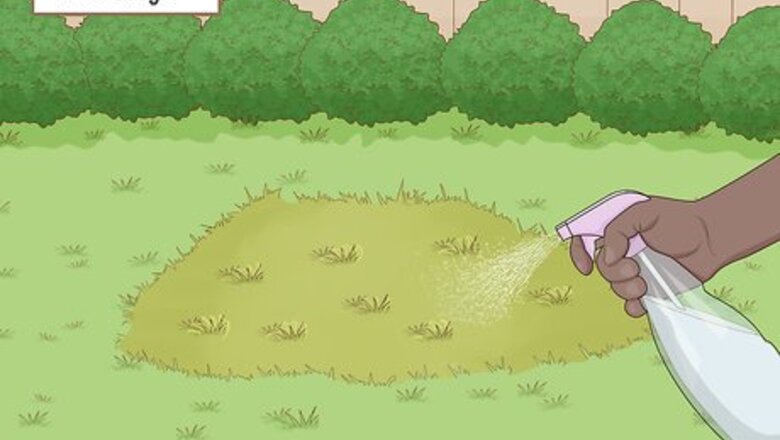
views
Spraying a Wet Application onto Plants and Trees
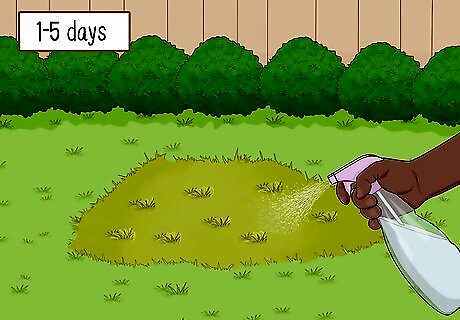
Make a wet solution to spray on trees and hard to reach areas. Sometimes you might have a tree or a section of your yard that is infected with bugs but that you wouldn’t be able to reach to sprinkle powder on the area. In these situations, you can make a wet application to spray onto those infected areas. Keep in mind that this will kill all of the insects on your plants—including any beneficial ones that might be living there. After it dries, diatomaceous earth will reduce the number of pests and bugs within 1 to 5 days, just depending on the type of pest. In addition to being a good option for hard to reach areas, a wet solution works well in areas that are really windy, as the dry powder would just blow away.Did You Know: Diatomaceous earth is made from the fossilized remains of algae. When insects come into contact with it, the powder penetrates their bodies and essentially absorbs all of their fat and oil, causing them to dehydrate and die.
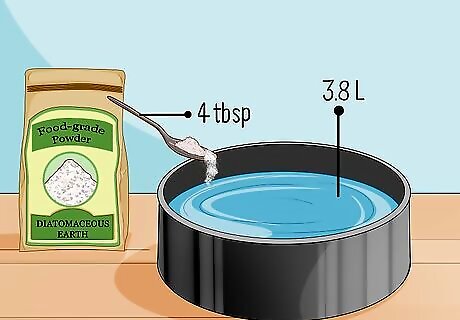
Combine 4 tbsp (60 grams) of food-grade powder with 1 gallon (3.8 L) of water. Put the diatomaceous earth and the water into a container with a lid. Shake the mixture up thoroughly until the powder is completely dissolved in the water. Because diatomaceous earth only works when it’s in powder form, it’s really important to not dilute it too much. Once it’s sprayed on the infected area, it’ll dry and leave behind a thin layer of powder, which is what will actually kill the pests.
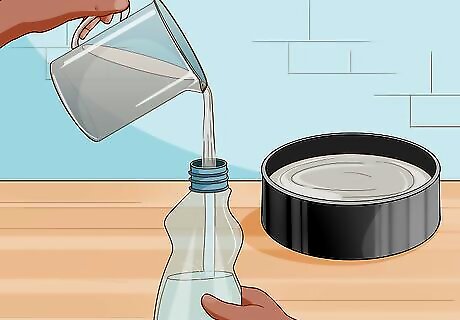
Transfer the mixture to a spray bottle. Once the mixture has been completely combined, go ahead and pour it into a spray bottle. If you need to cover a large section, use a garden sprayer to cover more area at once with more control over where the mixture lands. Buy a handheld sprayer at your local home improvement store. You can buy a battery-operated sprayer for about $50 to $100, or get a manual one that you pump yourself for about $15.
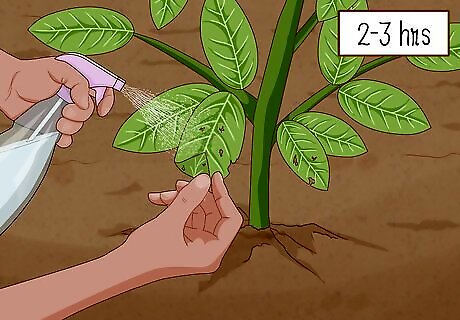
Spray the infected plants with the wet diatomaceous earth on all sides. Take your time to get both the tops and undersides of infected leaves. Spray trunks, stems, and the soil surrounding the base of the plant. Once the mixture dries, the remaining powder will stick to the plant and create a protective barricade to keep pests and bugs from damaging your plants, killing them along the way. It should only take 2 to 3 hours for the water to evaporate and leave behind the layer of powder. Once it has evaporated, the powder will start doing its work.
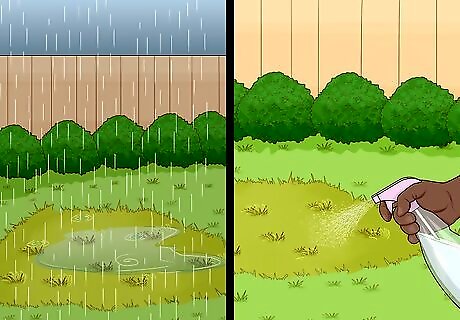
Reapply the mixture after it rains and the powder is washed away. Remember, the diatomaceous earth is only effective when it’s on the plant in powder form. If the dried layer of powder gets washed away in the rain, spray another coat onto the infected plants or trees. Once your plant or tree is insect-free, you’ll only need to use the diatomaceous earth whenever you notice pests creeping around again.
Using Powder Outdoors
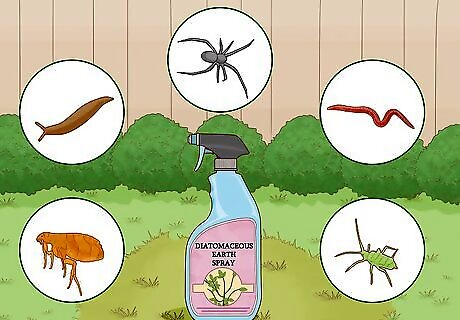
Use diatomaceous earth in your garden to get rid of unwanted pests. Food-grade diatomaceous earth is safe to use in areas where you, your family, and other creatures will come into contact with it. It’s great to apply to both potted and planted plants, vegetables, flowers, and trees. Diatomaceous earth is a great way to get rid of slugs, worms, mites, spiders, and fleas without potentially harming larger creatures, like birds, rabbits, or your household pets.Tip: You can also use dry diatomaceous earth on potted plants that are indoors.
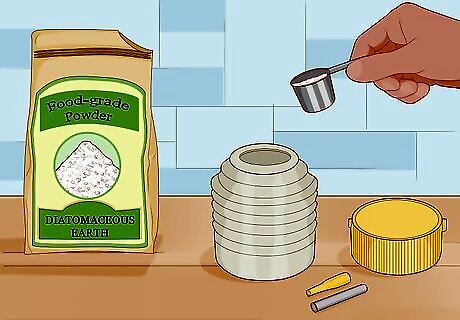
Scoop food-grade diatomaceous earth into a garden duster. Use a small shovel or a trowel to move the powder from its container to a garden duster. Use gentle movements to make as little dust as possible, and wear a disposable mask so that you don’t breathe in too much powder and irritate your throat. The food-grade powder is non-toxic to humans, but breathing in the dust can be irritating, especially if you have asthma or other similar sensitivities. A garden duster is a simple tool you can buy at your local home improvement store that allows you to disperse powder evenly.
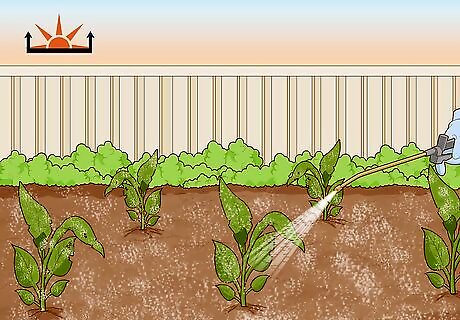
Apply the powder early in the morning when there is dew on the ground. The slight dampness will help the powder stick to the plants and prevent it from blowing away in the wind. You could also apply it later in the evening and let it work its magic overnight. If the forecast is calling for rain, it would be best to wait for clearer weather to use the diatomaceous earth. Rain will just wash it away and it won’t be effective at killing pests.
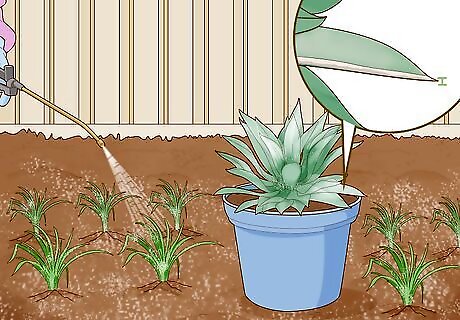
Shake the powder over the infected plants, vegetables, and leaves. Use your garden duster to apply a thin, even layer of powder over your yard, garden, or potted plants (you should still be able to see the color of the leaf or the ground through the powder). Sprinkle powder over the tops of the plants as well as the soil surrounding the base to catch any new pests that will try to climb up. If you do use diatomaceous earth on vegetables, just make sure to rinse them off thoroughly before you eat them after they’ve been harvested.
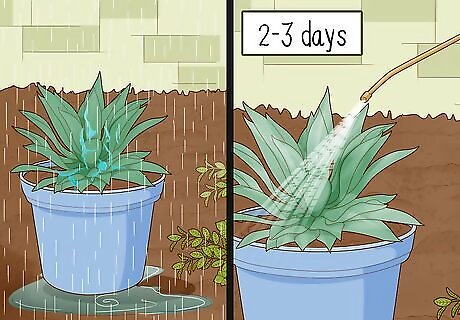
Reapply the powder after it rains if your plants are still infested. Diatomaceous earth is only effective when it’s in its powder form, so once the rain washes it off, it won’t be much use anymore. If, after a rain, you notice there are still some lingering pests, go ahead and sprinkle another layer of powder over the infected areas. If there’s no rain, the powder will last as long as the wind doesn’t blow it away, so it could be good for up to 2 to 3 days before you would need to reapply it. Reapplying the powder shouldn’t harm your plants at all. You can use it as often as you need with minimal adverse effects. The potential risk is if your plants can’t receive enough sunlight through the powder and start to look a little yellow. If that happens, stop using the powder for 1 to 2 weeks to let your plants recover.
Applying Diatomaceous Earth Indoors
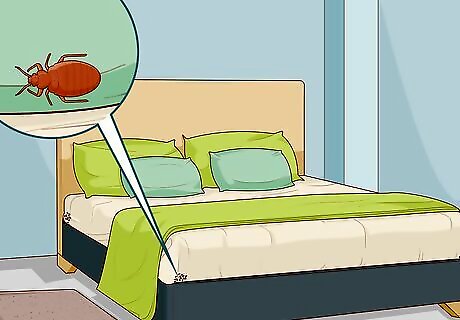
Use diatomaceous earth indoors to deal with fleas and bedbugs. Instead of using chemicals or bug bombs, use food-grade diatomaceous earth to stop flea and bed bug infestations. The powder will kill eggs, larvae, and adult bugs, making it a great option to deal with these pests that lay eggs that hatch quickly. In addition to using the diatomaceous earth, you’ll also need to treat all your linens, clothes, pillows, and other soft materials with hot water and heat to make sure they are clean, too.
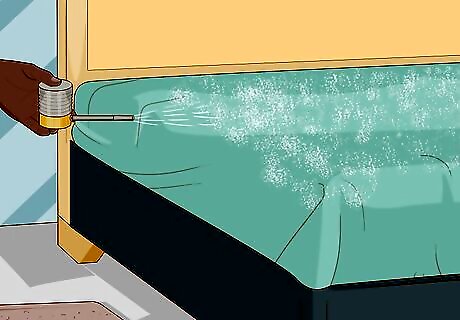
Sprinkle dry diatomaceous earth over areas that are infected. Consider wearing a face mask while you’re sprinkling the powder so that it doesn’t irritate your throat. Focus on areas that you’ve noticed are infected, like pet bedding, mattresses, box springs, windows sills, baseboards, and carpets. Apply a thin layer of powder over the entire infected area. Carpets and pet bedding are the biggest breeding grounds for fleas.Tip: Remove items that are small enough to be washed in the washing machine before sprinkling the diatomaceous earth, like pet toys, pillows, throw blankets, and stuffed animals.
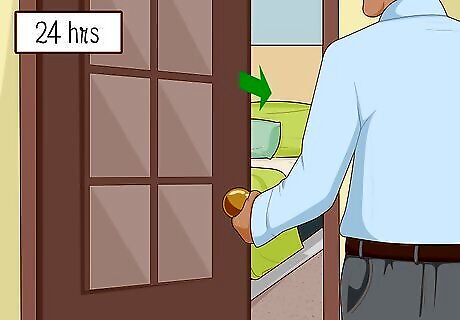
Avoid being in rooms that have been treated with the powder. The powder is non-toxic, but you don’t want it getting all over your clothes or in your hair. If your mattress is currently covered with powder, see if you can stay with a friend or use an inflatable mattress—but if it's just on the floors, it's fine to sleep in a room where diatomaceous earth has been applied. If you treated your carpets with diatomaceous earth and you don't want to track it throughout your home, you may want to lay down towels or a plastic tarp so you can walk over the carpet without spreading the powder around your home. It might be inconvenient for a day or so, but before you know it your home should be pest free!
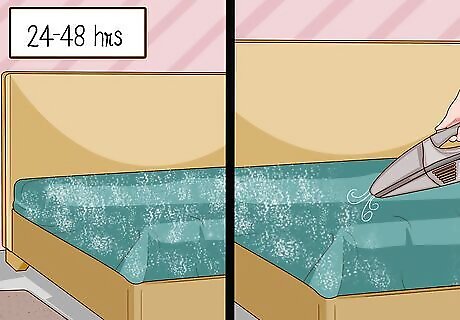
Vacuum up the powder after it has been sitting for 24 to 48 hours. Fleas start to die about 24 hours after they come into contact with diatomaceous earth; bedbugs start to die about 48 hours afterward. Vacuum the powder up really thoroughly—not only are you cleaning up the powder residue, but you’re also sweeping up all the dead bugs. If you can’t wait 24 to 48 hours, leave the powder for a minimum of 12 hours and plan to repeat the process 3 to 4 more times over the next 2 weeks to kill any newly hatching pests. You could even leave the powder for 2 to 3 days.
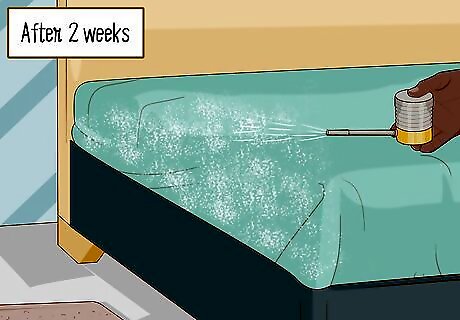
Reapply the powder after 2 weeks to kill any remaining bugs. Because fleas and bedbugs can mate and lay eggs very quickly, to be safe you should apply a second round of diatomaceous earth after 2 weeks to eradicate any lingering pests. Remember to vacuum up the powder after 24 to 48 hours. Treat pests as soon as you notice them to keep the problem from getting worse.

















Comments
0 comment